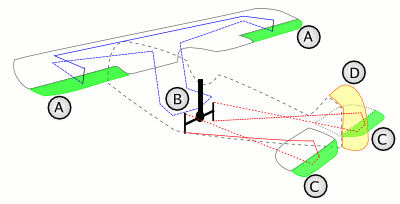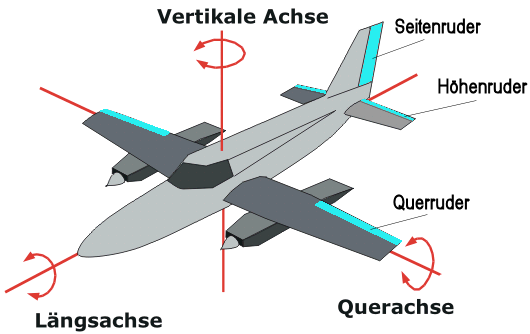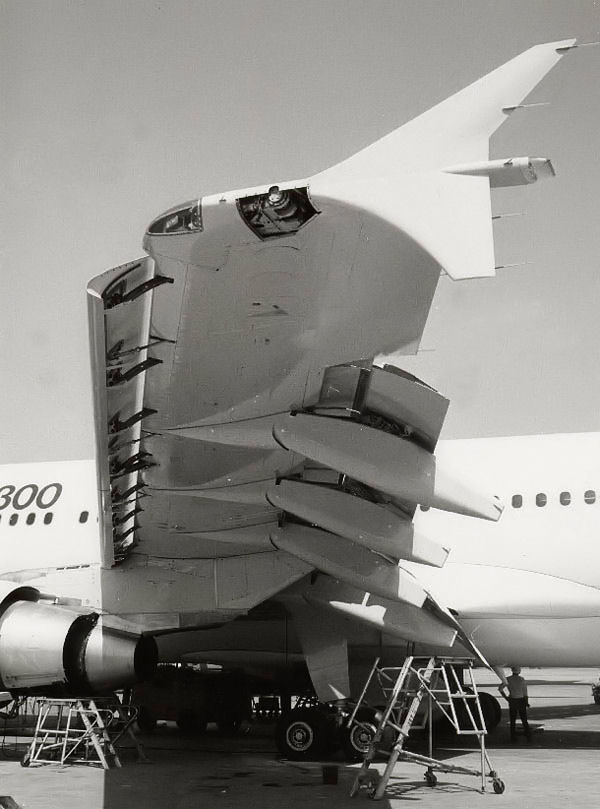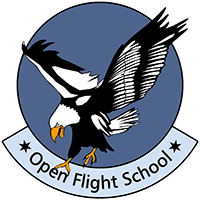Aircraft Components
4. Control Surfaces
 All moveables surfaces of an airplane are designated as control surfaces. In a car, the steered wheels transfer the desire to change direction from the steering wheel to the road. On airplanes this is done by small rotating components on the wings and tail fin, which can be pivoted via control cables or hydraulics from the control stick in the cockpit.
All moveables surfaces of an airplane are designated as control surfaces. In a car, the steered wheels transfer the desire to change direction from the steering wheel to the road. On airplanes this is done by small rotating components on the wings and tail fin, which can be pivoted via control cables or hydraulics from the control stick in the cockpit.
These small or even large control surfaces change the air flow and thus ensure a rotary movement about the respective axis.
The control surfaces can be divided into two groups:
Primary Control Surfaces
 They are used for directional control of the aircraft and do the main work for it.
They are used for directional control of the aircraft and do the main work for it.
The Rudder is vertical on the tail fin and steers the airplane to the left and right.
The Elevator is also located on the tail, but horizontally, making the aircraft lower or lift the tail so it can fly up or down.
The Ailerons are located at the wing edges and are usually asynchronously pivoted, i.e. one up and the other down. The airflow is thus diverted upwards or downwards over the wing, and the aircraft rotates around its longitudinal axis.
Secondary Control Surfaces
These are the control surfaces used to trim the aircraft. These smaller surfaces are usually installed next to the primary rudders or are often a direct component of the primary control surfaces (i.e. a small rudder in the rudder). They are not intended for normal steering when flying, but serve to offset the main surface and thus reduce the required force on the pilot's control stick. The correct trimming allows a reduces pilot workload and makes the aircraft more efficient.
Trim is generally available on all axes. Ailerons, rudder and elevator are ideally all trimmable. Some airplanes have only one or no trim function.
Trim in the following order: rudder, elevator, and aileron.
Flaps and Slats
 Even the flaps and slats are considered secondary control surfaces.
Even the flaps and slats are considered secondary control surfaces.
Slats. We don't want to go into the subject of slats here, because we'll save that for later. Just this much can be said; a slat is located at the front edge of some airplane wings and increases the lift during slow flying.
Flaps. Much more important is the correct use of the flaps, also called landing flaps, which is actually wrong, because they may also used for take-off.
Flaps are extendable trailing edge wing extensions, which can be adjusted in steps or continuously. This ensures that the air flowing over the wing has to cover an even longer distance to the trailing edge of the wing. We know from aerodynamics that this provides lift. This is why flaps are used both during take-off and landing to give the slow-flying aircraft more lift. This helps to ensure safe flight. Flaps generate an enormous resistance with increasing speed and are therefore only used in certain speed ranges.
